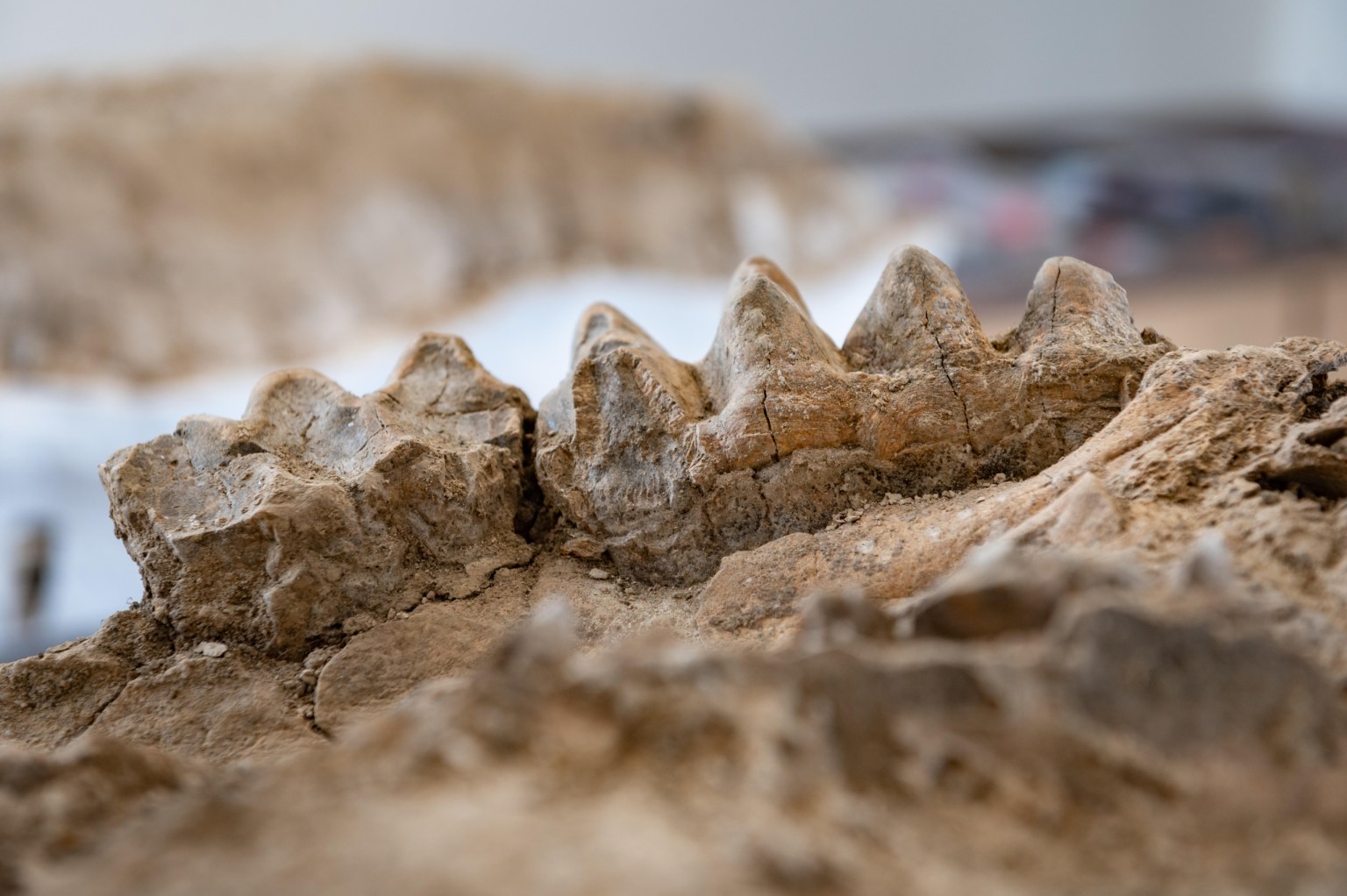
A park ranger wandering through a petrified forest in California has unearthed a trove of prehistoric fossils, including a stunningly preserved mastodon skull and the remains of a 400-pound (181 kilograms) monster salmon, SFGate reported.
Paleontologists unearthed dozens of fossil species near the Mokelumne River watershed in the foothills of the Sierra mountains southeast of Sacramento. The fossil site, which dates back roughly 10 million years to the Miocene epoch, is one of the most significant such troves ever discovered in the Golden State.
"Few other fossil discoveries like this exist in California," Russell Shapiro, a professor of paleontology and stratigraphy at California State University, Chico, told Chico State Today.
Related: 25 amazing ancient beasts
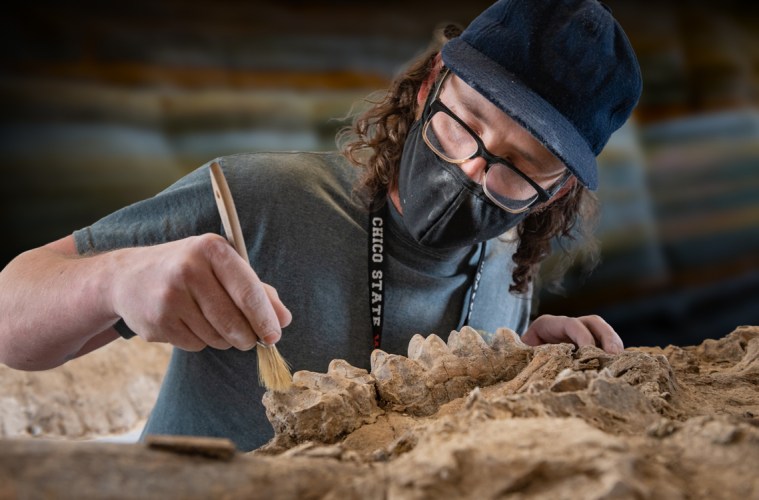
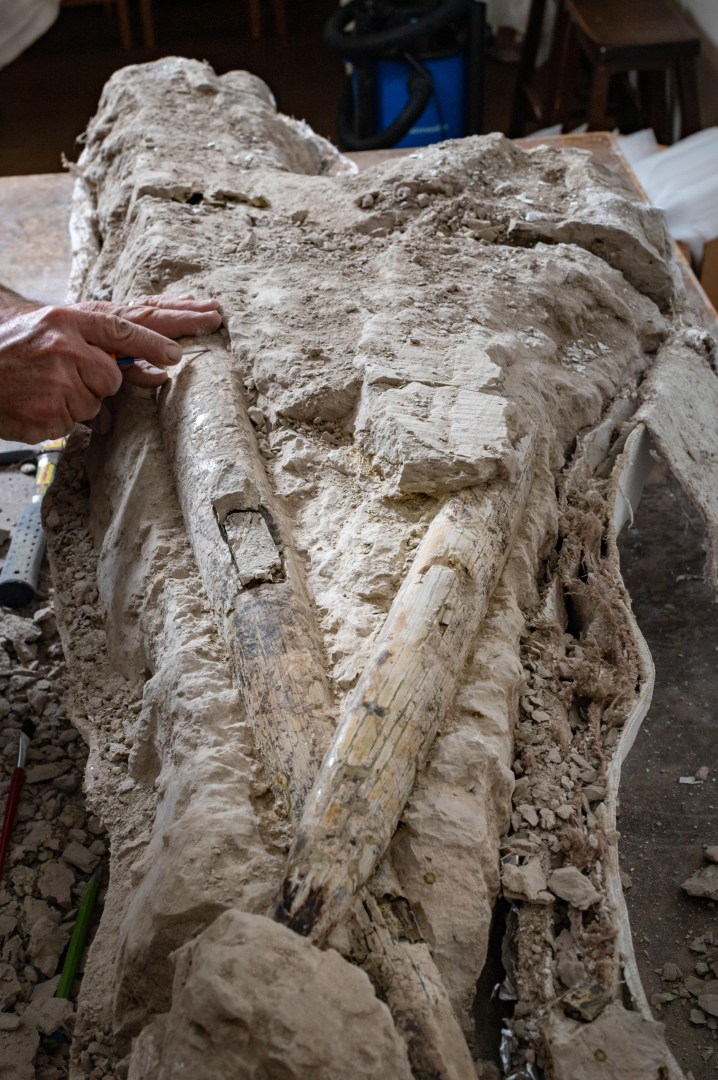
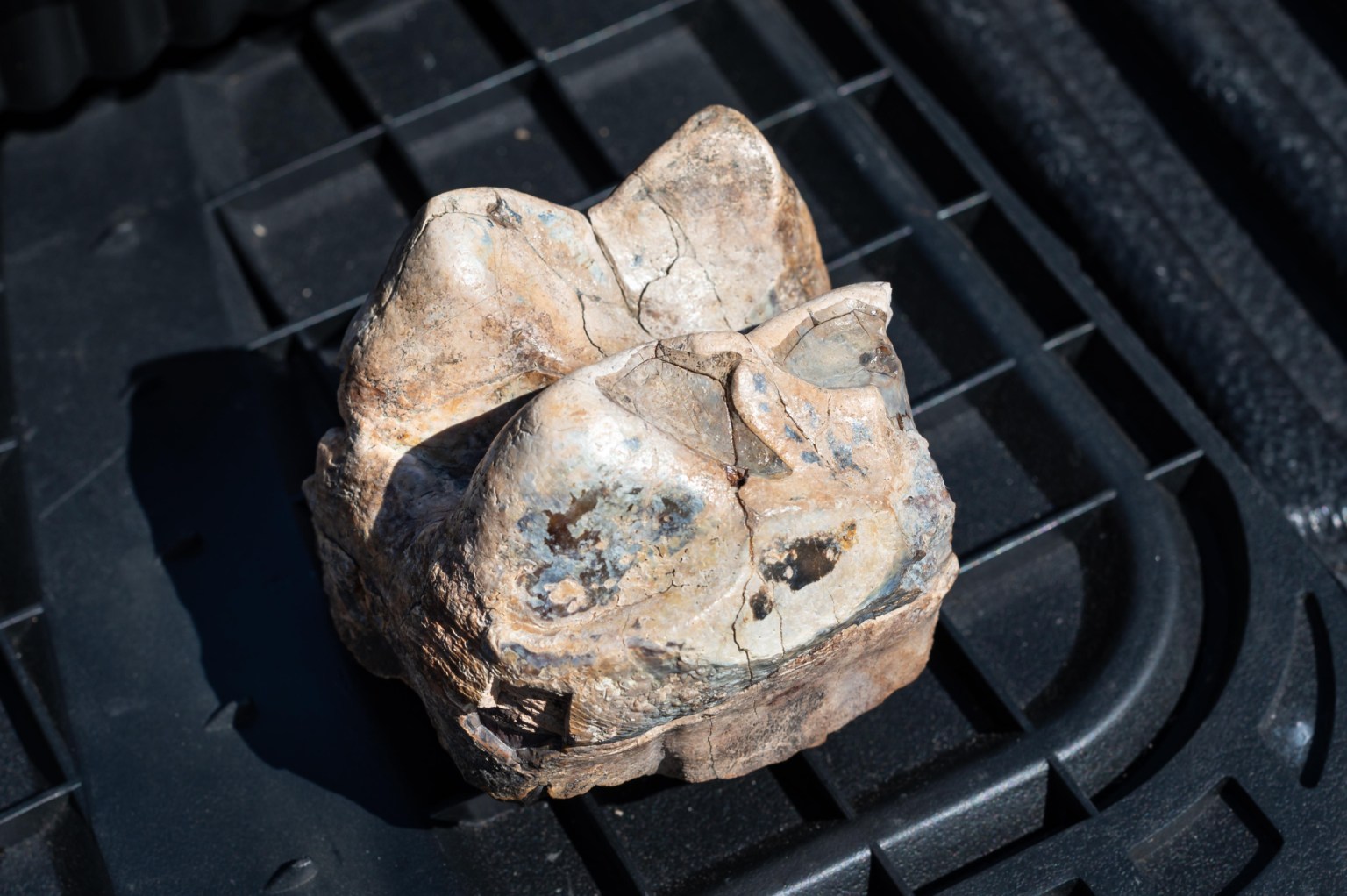
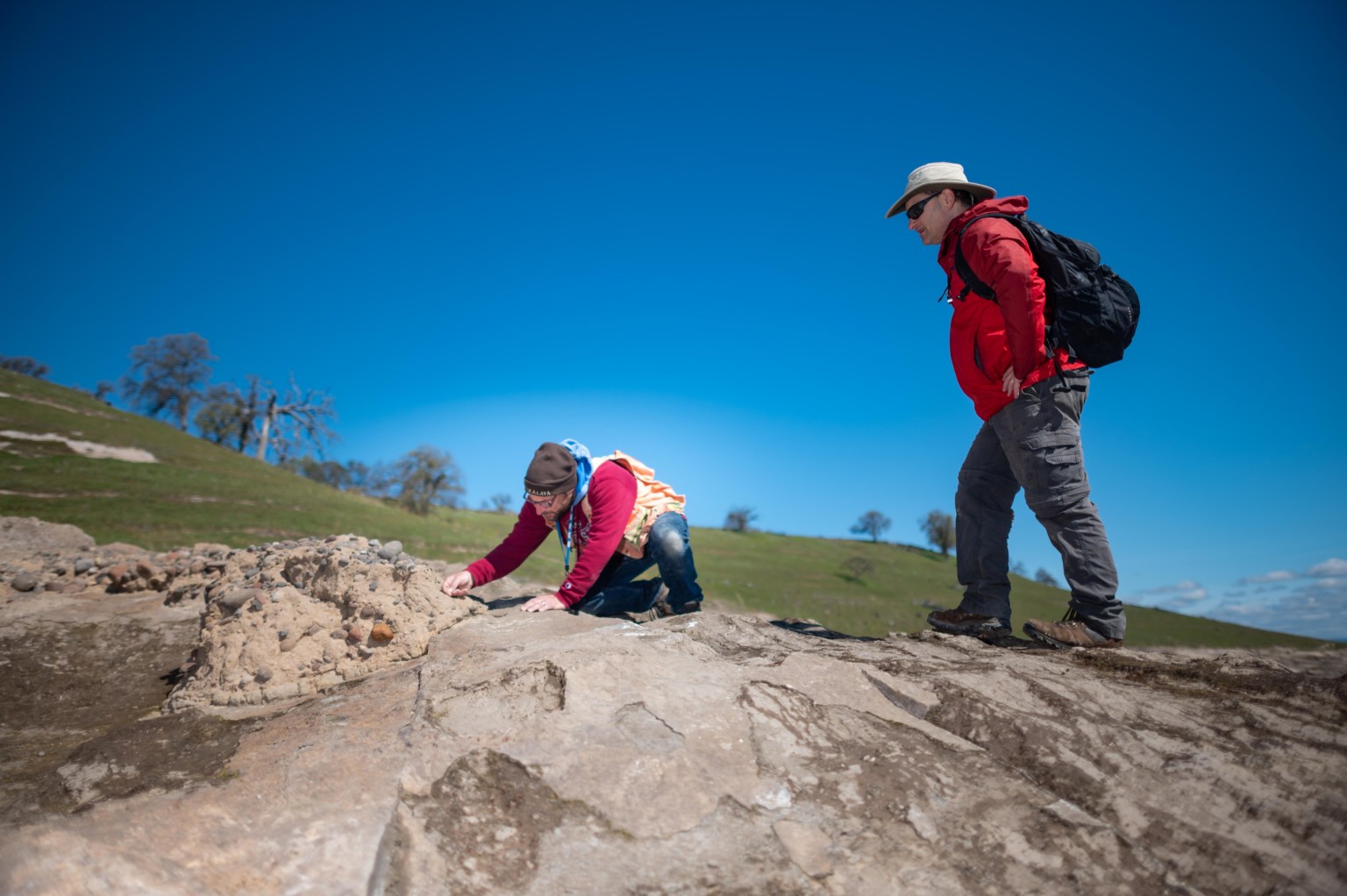
The site was discovered by accident.
Greg Francek, a ranger naturalist with the East Bay Municipal Utility District (EBMUD), which provides drinking water for the area, was ambling near the watershed when he noticed something that looked like wood, but was smooth like stone, according to a statement from the EBUMD.
"I happened upon a petrified tree," Francek said in a voice recording included with the statement. "This tree was partially encased in the burial sediments, and because one end was exposed, I could actually see the tree rings inside."
Sign up for the Live Science daily newsletter now
Get the world’s most fascinating discoveries delivered straight to your inbox.
He looked around and discovered a second, then a third, and so on, and it suddenly dawned on him that he was walking in a petrified forest.
Francek returned over the next few weeks to conduct a more organized survey, and that's when he found vertebrate fossils. So he reached out to paleontologists and geologists, including Shapiro.
Shapiro didn't expect to find much, but he was soon surprised: His team began excavating and found the tip of a pearly bone, and as they etched away the surrounding rock, a pair of tusks, teeth and a skull began to emerge. It was a mastodon, astonishingly preserved, Chico State Today reported.
"What you hope to find is a tip of a tusk," Shapiro told CSU Today. "Not only do we have the tip, but we have the entire thing. And it's just beautiful ivory. It's mind-blowing."
Over the past year, Shapiro and his colleagues have uncovered hundreds of animal specimens constituting dozens of species, all within a forest of 600 petrified trees. Among the ancient species the team uncovered were: the giant fish, which is an ancestor to modern-day salmon; an extinct camel the size of a giraffe; the mastodon and the gomphothere, an ancestor to elephants.
The team has also found the remains of rhinos, giant tortoises, horses and tapirs. The bones of these primeval creatures were likely carried to the region by floods and debris flows from volcanoes farther inland, Chico State Today reported.
At the time these long-lost creatures lived, the region would have been an oak forest fringed by an ancient ocean, according to Chico State Today.
For now, the research team is keeping the location of the fossil dig a secret. But those who want to see the mastodon will be able to view it at the university's Gateway Science Museum in late fall.
Originally published on Live Science.

Tia is the managing editor and was previously a senior writer for Live Science. Her work has appeared in Scientific American, Wired.com and other outlets. She holds a master's degree in bioengineering from the University of Washington, a graduate certificate in science writing from UC Santa Cruz and a bachelor's degree in mechanical engineering from the University of Texas at Austin. Tia was part of a team at the Milwaukee Journal Sentinel that published the Empty Cradles series on preterm births, which won multiple awards, including the 2012 Casey Medal for Meritorious Journalism.










